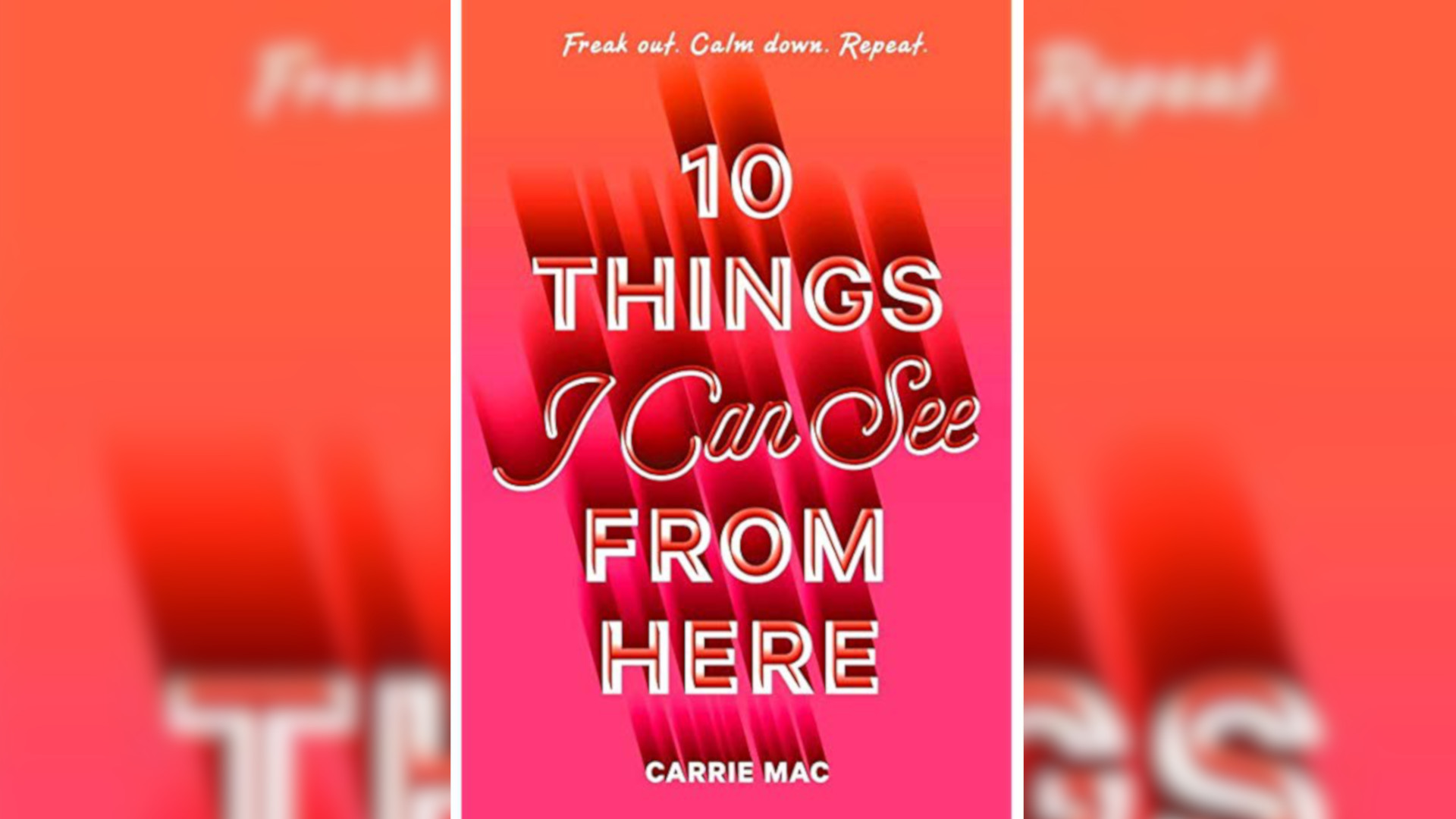When I put out a call on Twitter months ago asking for LGBTQ YA (or YA appropriate) book recommendations, I couldn’t have dreamed that Book Twitter would offer up so many gems. 10 Things I Can See From Here by Carrie Mac really struck a chord with me. The heroine, Maeve, suffers from crippling anxiety attacks and can’t stop herself from constantly imagining the worst that can possibly happen in any scenario. As the book opens, Maeve is grappling with a new and tough challenge to her emotional peace of mind: her mother, the only person who knows how to talk her out of a panic attack, is leaving to work in Haiti for 6 months and Maeve has to journey alone to Vancouver to stay with her dad and stepfamily.
The journey itself is fraught with moments of extreme anxiety for Maeve; too wracked with fear to fly, she opts for a bus, only to read about a murder that happened on a bus once. Add to this the fact that her somewhat distractible father is late picking her up at the bus terminal, and… well, suffice to say Maeve has some challenges from the very beginning.
As Maeve learns to navigate her new life in Vancouver, she meets Salix, a girl who seems to fear nothing. She travels on her own, busks on the streets of Vancouver late at night, and generally approaches life with a very open and adventurous attitude – the polar opposite of Maeve.
Despite their differences, the attraction between them is apparent, and they quickly spark up a friendship that develops into something more.
As with Jane, Unlimited, I appreciated that in this novel, Maeve’s sexual orientation isn’t a topic of discussion or point of conflict for her or her family. The focus is on Maeve starting a new chapter in her life and learning new ways to cope with her illness, while also finding some new independence and self-confidence she’d lacked when surrounded by and depending on her usual support systems.
As someone who also lives with chronic anxiety disorder, I was pleased with the treatment of Maeve’s illness in the book. While I don’t suffer from the illness on the same scale as Maeve, the author has portrayed the panic attacks and just sheer general anxiety pretty realistically. If you or your child wants to learn more about what it’s like to live with anxiety disorder, this novel is a pretty great way to do so in an organic and entertaining fashion.
However, while I’d recommend this book, I think it’s best for older readers. YMMV, but there is some strong language, and graphic descriptions of death while Maeve is working out her issues. As a result, if you or your kid suffers from anxiety, this book might be triggering, so tread carefully.
